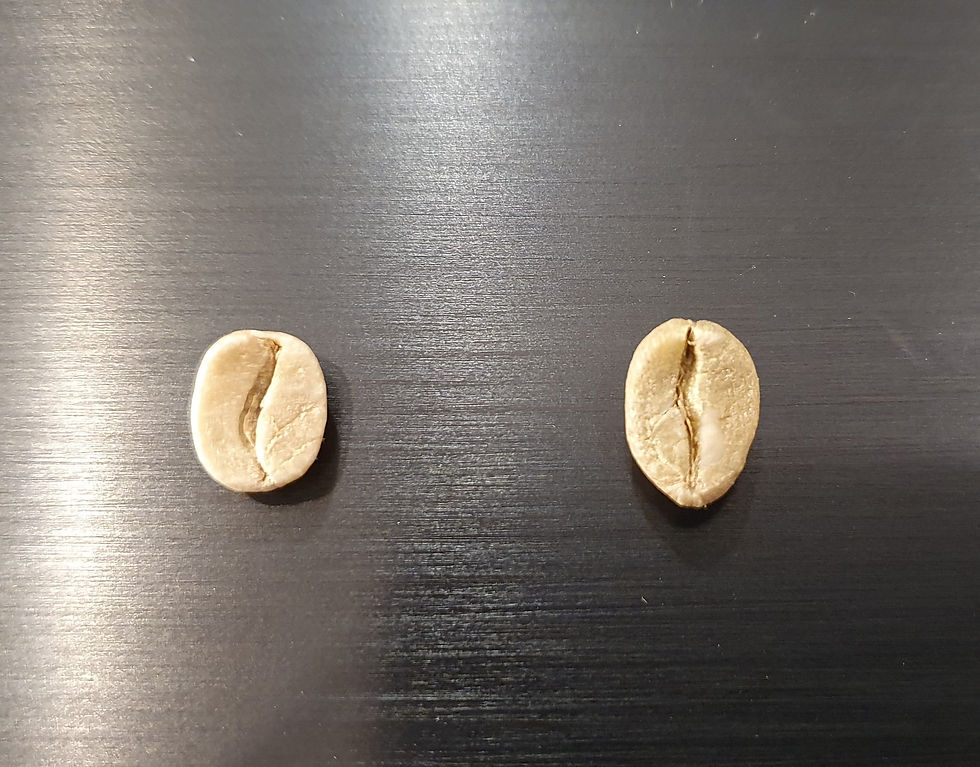The 4 Worlds of Coffee
- Mattia Giuseppe Devecchi

- Apr 17, 2021
- 3 min read

Good morning Coffee Lovers, today I want to talk to you about what I like to describe as the 4 Worlds of Coffee, in reality it is an improper terminology, as there are many other worlds, if we want to call them so! In this post we talk about the 4 main ones: Arabica, Robusta, Washed, Natural. Let's start with the first two: how many times have you heard me talk about Arabica and Robusta when you come to my bar? Maybe associated with percentages like 70/30 or 50/50 ... ... but what are we talking about specifically? You must know that there are several botanical species of coffee in the world, the two main ones are the Coffea Arabica also simply called Arabica and the Coffea Canephora also called Robusta. The two qualities have very different characteristics, first of all is the habitat in which they grow: the Arabica plant prefers altitudes from 1000 meters above sea level and up and a particularly rainy climate; Robusta, on the other hand, grows from the plains up to about 900 meters above sea level, does not require a particularly humid climate and is much more resistant to attacks by diseases (precisely for this reason the characteristic name).

At first glance, they also differ in shape and color: the Arabica bean (which you can see on the left in the photo above) is smaller, rounded and blue / greenish in color. The Robusta grain (the one on the right) is generally larger, yellowish in color and with a central groove tending to be straighter than the previous one. Having said that, let's move on to analyze the taste characteristics: Arabica is characterized by floral and fruity scents typical of a more delicate and acidic sensoriality, while Robusta is characterized by more decisive tastes of bitter and chocolate that characterize a more important body. . Another notable feature is the quantity of caffeine: Arabica has a lower content unlike Robusta. A few small curiosities about the world market: did you know that coffee is the best-selling raw material in the world after oil? Just think that the sale and listing of Arabica is handled by the New York stock exchange, while the Robusta is handled directly by the London stock exchange. The belt of the world where coffee is grown is called the "Coffee Belt" and is the strip between the two tropics.
We now come to the other two macro worlds of Coffee: Washed and Natural. This important differentiation concerns the processing method of the coffee cherries also called Drupes, in order to extract our beloved beans. To talk about this, however, we must take a step back to analyze how the drupe is composed with the following scheme:

Now that we know what coffee drupes are and how they are composed, let's move on to extraction: the washed system, also called wet or washed, is the most common system and consists in pulping the cherries by macerating them in water, special machines are also used. skinning and the result is a fermentation of the grains which increases the acidity with the relative fruity and floral scents. The next step is sun drying.

In the natural method, also known as dry, our beloved drupes are placed on sheets or tubs in the sun to proceed with a drying with subsequent removal of the pulp and mucilage now dry. The result is a coffee that retains all its characteristics, including a much more intense body.

If one day you want to try a natural coffee, Montecristo stands out among our Gourmet blends ... ... it's really worth it!
See you soon Coffee Lovers!
MD




Comments